I have noticed that Sennheiser headphones (as an example) are often providing smoother frequency responses than Hifiman headphones - they have a lot less "fine grass" variations. However, I have an HE4XX and in no way would I describe it as a bad headphone, in fact I would describe it as a good headphone, although not my favourite. I don't think you can say that there is not a good Hifiman headphone out there, because there are already good ones out there.Do you see that huge high mid scoop followed by a mountainous treble spike? Also, oratory measurements are too smoothed to see the linear distortion in its full glory.
View attachment 184526
View attachment 184527
In comparison...View attachment 184528
-
WANTED: Happy members who like to discuss audio and other topics related to our interest. Desire to learn and share knowledge of science required. There are many reviews of audio hardware and expert members to help answer your questions. Click here to have your audio equipment measured for free!
- Forums
- Audio, Audio, Audio!
- Headphones and Headphone Amplifier Reviews
- Headphone & IEM Reviews & Discussions
You are using an out of date browser. It may not display this or other websites correctly.
You should upgrade or use an alternative browser.
You should upgrade or use an alternative browser.
Hifiman Arya Review (headphone)
- Thread starter amirm
- Start date
I did indeed, and that was the whole point of the comparison I posted - those other HifiMan headphones don't have the Arya's 'mountainous treble spike' and 'huge mid scoop' (to a lesser extent for the HE400i in terms of the latter).Do you see that huge high mid scoop followed by a mountainous treble spike?
I have noticed that Sennheiser headphones (as an example) are often providing smoother frequency responses than Hifiman headphones - they have a lot less "fine grass" variations.
That 'fine grass' is just due to the measurements on this site and by Crinacle being polluted by environmental noise, as I've said before (see the second paragraph of this post). HifiMan headphones just happen to be some of the least isolating (most 'open') over-ear headphones available, as can be seen from Rtings' noise isolation measurements e.g. the treble isolation of the Arya and Sundara is around -4 dB, compared to the Sennheiser HD650's -12.5 dB, despite them all being open-back.Also, oratory measurements are too smoothed to see the linear distortion in its full glory.
I'm on the same page as you that Hifiman headphones can be good in my experience (& maybe great for some people & some models).I did indeed, and that was the whole point of the comparison I posted - those other HifiMan headphones don't have the Arya's 'mountainous treble spike' and 'huge mid scoop' (to a lesser extent for the HE400i in terms of the latter).
That 'fine grass' is just due to the measurements on this site and by Crinacle being polluted by environmental noise, as I've said before (see the second paragraph of this post). HifiMan headphones just happen to be some of the least isolating (most 'open') over-ear headphones available, as can be seen from Rtings' noise isolation measurements e.g. the treble isolation of the Arya and Sundara is around -4 dB, compared to the Sennheiser HD650's -12.5 dB, despite them all being open-back.
I was gonna state a case about the "fine grass" but after looking at Oratory's graphs of Hifiman I can see the "fine grass" is not really there because averaging of lots of measurements would smooth out that environmental noise element that you mentioned (as an hypothesis) - it did used to be there on one of his older HE4XX published measurements though. There does seem to be a general trend that planar headphones do have a little more small & abrupt variations than dynamic driver headphones, even though it's not the super jagged "fine grass" that we were talking about. As I said the environmental noise element should be smoothed out by his many measurements and averaging of those - because the noise would be random.
Planar:
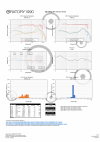
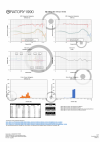 (HE4XX in second pic here is praps a best case well-behaved case of a planar headphone, we won't refer to the Stealth though!)
(HE4XX in second pic here is praps a best case well-behaved case of a planar headphone, we won't refer to the Stealth though!)Dynamic:
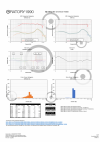
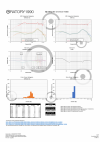
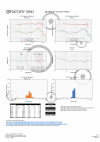
These are just a few examples, not a statistical representation, but I'd say on balance that planar headphones seem to exhibit less overall smoothness in frequency response than dynamic driver headphones on both the micro level and perhaps even in the bigger macro level. (Micro I'm using to mean small more sudden variations, and macro meaning large variations). It's hard to get a handle on this without being really methodical and somehow analysing the variations of the two populations, but it's a trend I've noticed. The environmental noise aspect of "fine grass" should be removed from the equation if someone is doing many measurements & averaging them, so what remains should be "real".
Last edited:
That 'fine grass' is just due to the measurements on this site and by Crinacle being polluted by environmental noise, as I've said before (see the second paragraph of this post). HifiMan headphones just happen to be some of the least isolating (most 'open') over-ear headphones available, as can be seen from Rtings' noise isolation measurements e.g. the treble isolation of the Arya and Sundara is around -4 dB, compared to the Sennheiser HD650's -12.5 dB, despite them all being open-back.
This :

is not the same thing as this :

Zoomed in, with my own in-ear measurements (performed at levels quite a bit lower than on ear simulators, the absolute dB values below are meaningless as the mics aren't calibrated), with a closed back (green trace), and open back Sennheiser (blue), and an open-back Hifiman (red) :
With a shorter window :
Besides, it would be a weird coincidence that the environmental noise would magically produce the exact same artefacts across repeated seatings : https://crinacle.com/graphs/headphones/hifiman-susvara/
Also, we'd never see these high-Q problems in planar closed backs (except we occasionally do).
Also, the difference measured by Rtings in terms of isolation between Hifiman headphones and some other open backs is negligible in bands where these high-Q resonances are still occurring.
It's just that quite a few headphones, perhaps more often planars, and Hifiman ones in particularly, tend to be a bit of a resonant mess. Whether that's an audible problem or not when playing music...
I can listen to the stealth's with no EQ and its still very pleasing. With EQ they open up ever so slightly with just a little bit of extra room to breath and more presence with the bass. I only add +3db to the bass vs +5 for the Harman curve. The treble for me is prefect after living with the TH909's for so long.
can you share for apo peace eq?
or are there other good EQs not for arya stealth?
The problem is you don't know how many units Oratory has averaged, which could vary quite a bit for different models. Yeah I was primarily referring to the fine grass variations as I said in my post. Note though by 'environmental noise' I'm not only including things like instrument fan noise (which can have a significant effect on the measurements), but also acoustic crosstalk from one channel to the other during the measurement (when stereo sweeps are used, as they are on this site), which could result in comb filtering and so 'jaggies' in the measurements (lower Q than the fine grass noise). HifiMan headphones not only have among the least noise isolation, but also the highest sound leakage, with the Arya leaking 72 dB at 1 ft with a 100 dB signal according to Rtings' measurements (compare that with 60 dB leakage for the HD650 for example). So HifiMan headphones will exhibit more acoustic crosstalk than other headphones (which it could be argued is actually a good thing, as crosstalk occurs in speaker playback, which most music is mixed and mastered on and for). When you look at other planars also with low isolation and high leakage they show comparable jaggedness. And it's not just planars either, but dynamic driver headphones with poor isolation and high leakage too. Unless acoustic crosstalk as well as more general environmental noise are controlled for by measuring with individual channel sweeps and acoustically isolating the measurement rig, conclusions that HifiMan (or planar) headphones have inherently more jagged frequency response than other headphones are invalid.I'm on the same page as you that Hifiman headphones can be good in my experience (& maybe great for some people & some models).
I was gonna state a case about the "fine grass" but after looking at Oratory's graphs of Hifiman I can see the "fine grass" is not really there because averaging of lots of measurements would smooth out that environmental noise element that you mentioned (as an hypothesis) - it did used to be there on one of his older HE4XX published measurements though. There does seem to be a general trend that planar headphones do have a little more small & abrupt variations than dynamic driver headphones, even though it's not the super jagged "fine grass" that we were talking about. As I said the environmental noise element should be smoothed out by his many measurements and averaging of those - because the noise would be random.
Planar:
View attachment 184702View attachment 184703(HE4XX in second pic here is praps a best case well-behaved case of a planar headphone, we won't refer to the Stealth though!)
Dynamic:
View attachment 184704View attachment 184705View attachment 184706
These are just a few examples, not a statistical representation, but I'd say on balance that planar headphones seem to exhibit less overall smoothness in frequency response than dynamic driver headphones on both the micro level and perhaps even in the bigger macro level. (Micro I'm using to mean small more sudden variations, and macro meaning large variations). It's hard to get a handle on this without being really methodical and somehow analysing the variations of the two populations, but it's a trend I've noticed. The environmental noise aspect of "fine grass" should be removed from the equation if someone is doing many measurements & averaging them, so what remains should be "real".
Last edited:
HRTF_Enthusiast
Active Member
- Joined
- Oct 22, 2021
- Messages
- 178
- Likes
- 80
Crinacle uses a GRAS 43AG and measures each channel separatelyThe problem is you don't know how many units Oratory has averaged, which could vary quite a bit for different models. Yeah I was primarily referring to the fine grass variations as I said in my post. Note though by 'environmental noise' I'm not only including things like instrument fan noise (which can have a significant effect on the measurements), but also acoustic crosstalk from one channel to the other during the measurement (when stereo sweeps are used, as they are on this site), which could result in comb filtering and so 'jaggies' in the measurements (lower Q than the fine grass noise). HifiMan headphones not only have among the least noise isolation, but also the highest sound leakage, with the Arya leaking 72 dB at 1 ft with a 100 dB signal according to Rtings' measurements (compare that with 60 dB leakage for the HD650 for example). So HifiMan headphones will exhibit more acoustic crosstalk than other headphones (which it could be argued is actually a good thing, as crosstalk occurs in speaker playback, which most music is mixed and mastered on and for). When you look at other planars also with low isolation and high leakage they show comparable jaggedness. And it's not just planars either, but dynamic driver headphones with poor isolation and high leakage too. Unless acoustic crosstalk as well as more general environmental noise are controlled for by measuring with individual channel sweeps and acoustically isolating the measurement rig, conclusions that HifiMan (or planar) headphones have inherently more jagged frequency response than other headphones are invalid.
I know he measures each channel separately, but is the measurement sweep signal stereo or single-channel? (Either way the rig isn't acoustically isolated, and is also portable so environmental noise won't even be a constant on-location.)Crinacle uses a GRAS 43AG and measures each channel separately
Last edited:
Some well thought out points, I suppose in order to really verify your ideas it would require some experimentation with the actual measurements on the part of Amir or anyone else with a suitable measurement setup......I mean that would be good to see so that we could drill down into what is really causing the tendency of planar for fine grass.....and just other anomalies in the measurements which you touched upon. Thinking about it further re your crosstalk points, you'd actually actually be exposed to those effects when you're listening to the headphone so the fine grass of planars (if this is the cause) would not really be a measurement anamoly, but an actual part of listening to such headphones - whether that be a positive or negative.....fine grass in itself wouldn't really be a positive, but the small amount of crosstalk could be for some people. I very very briefly tried crosstalk and I just found it degraded the sound, but there's probably a plethora of ways to set it up for a different experience....but I don't need crosstalk to enjoy my headphones so I've not gone down that route.The problem is you don't know how many units Oratory has averaged, which could vary quite a bit for different models. Yeah I was primarily referring to the fine grass variations as I said in my post. Note though by 'environmental noise' I'm not only including things like instrument fan noise (which can have a significant effect on the measurements), but also acoustic crosstalk from one channel to the other during the measurement (when stereo sweeps are used, as they are on this site), which could result in comb filtering and so 'jaggies' in the measurements (lower Q than the fine grass noise). HifiMan headphones not only have among the least noise isolation, but also the highest sound leakage, with the Arya leaking 72 dB at 1 ft with a 100 dB signal according to Rtings' measurements (compare that with 60 dB leakage for the HD650 for example). So HifiMan headphones will exhibit more acoustic crosstalk than other headphones (which it could be argued is actually a good thing, as crosstalk occurs in speaker playback, which most music is mixed and mastered on and for). When you look at other planars also with low isolation and high leakage they show comparable jaggedness. And it's not just planars either, but dynamic driver headphones with poor isolation and high leakage too. Unless acoustic crosstalk as well as more general environmental noise are controlled for by measuring with individual channel sweeps and acoustically isolating the measurement rig, conclusions that HifiMan (or planar) headphones have inherently more jagged frequency response than other headphones are invalid.
Although that's only a valid mention if he only plays the sweep on each channel seperately, like GaryH said above.Crinacle uses a GRAS 43AG and measures each channel separately
Yeah that's what I meant by this:Thinking about it further re your crosstalk points, you'd actually actually be exposed to those effects when you're listening to the headphone so the fine grass of planars (if this is the cause) would not really be a measurement anamoly, but an actual part of listening to such headphones - whether that be a positive or negative.....fine grass in itself wouldn't really be a positive, but the small amount of crosstalk could be for some people.
Of course the acoustic crosstalk with any headphone will be much less than with a pair of speakers, so whether this is an audible effect with headphones, or just manifests in the measurements with small high-Q variations (which research shows are less audible) that aren't even perceived is debateable.So HifiMan headphones will exhibit more acoustic crosstalk than other headphones (which it could be argued is actually a good thing, as crosstalk occurs in speaker playback, which most music is mixed and mastered on and for).
Some well thought out points,
Nah not really.
I suppose in order to really verify your ideas
No need to do so, that's already been done for eons
Note though by 'environmental noise' I'm not only including things like instrument fan noise (which can have a significant effect on the measurements),
DualTriode's post concerns non-linear distortion measurements, not FR.
As already written, basic logic should be enough to alleviate your concerns that environmental noise is responsible for the high-Q features scattered throughout the response of some headphones (otherwise we either wouldn't be able to repeat the results if environmental noise wasn't constant, or we'd find the same results for R and L channels if it is), but since you need help :
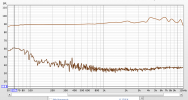

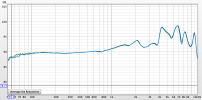
No change in the response that couldn't be attributed to seatings to seatings variation.
The beauty of these modern measurement techniques precisely is that they're designed to minimise that problem, at least up to a point, particularly at the levels headphones are tested at vs the sort of conditions the test takes place in.
but also acoustic crosstalk
*sigh*
Headphone Test Lab test results manufacturers hifiman susvara
Headphone Test Lab test results manufacturers hifiman susvara
Shout-out to the Hifiman customer service. I might have manhandled my Arya v2 a bit and one of the headphone jacks got slightly loose. They asked me which version I want as replacement and I had an SE at my doorstep 10 days later. After 2 weeks I can say I’m very glad I went with the SE, the tweaks are minor (to my ears to the better) and the sensitivity increase is impressive.
I traded in my v2's for the v3's/Stealths. I'm impressed with HFM improving the sometimes "plasticky" or "metallic" timbre of the older versions out of the box. I'm also impressed with the increased bass "punch/dynamics" and it being quite a bit easier to drive - which makes amplifier matching much easier with the v3's. The older versions almost required one to use powerful discrete or hybrid Class A amps to improve those version's timbre deficiencies. Most of the THX/NFCA IC opamp based amps didn't sound natural with the older Aryas - and the main reason that those persons who didn't like the Arya's SQ mostly used THX amps with them. They weren't a good match - synergy wise.Shout-out to the Hifiman customer service. I might have manhandled my Arya v2 a bit and one of the headphone jacks got slightly loose. They asked me which version I want as replacement and I had an SE at my doorstep 10 days later. After 2 weeks I can say I’m very glad I went with the SE, the tweaks are minor (to my ears to the better) and the sensitivity increase is impressive.
- Joined
- Oct 25, 2019
- Messages
- 11,116
- Likes
- 14,783
Care to enlighten us as to what properties the discrete /class A amps have that the thx etc don't? And by that I mean where those properties would show in either the standard amp measurements done here or any other measurement that could be performed?I traded in my v2's for the v3's/Stealths. I'm impressed with HFM improving the sometimes "plasticky" or "metallic" timbre of the older versions out of the box. I'm also impressed with the increased bass "punch/dynamics" and it being quite a bit easier to drive - which makes amplifier matching much easier with the v3's. The older versions almost required one to use powerful discrete or hybrid Class A amps to improve those version's timbre deficiencies. Most of the THX/NFCA IC opamp based amps didn't sound natural with the older Aryas - and the main reason that those persons who didn't like the Arya's SQ mostly used THX amps with them. They weren't a good match - synergy wise.
And to drag it back to the Arya and something resembling the science of audio, which area of the Arya v2 measurements would change if hooked up to one of the discrete /class A amps?
solderdude
Grand Contributor
The older versions almost required one to use powerful discrete or hybrid Class A amps to improve those version's timbre deficiencies.
interesting... what would be the technical explanation for your personal observation ?
Nothing to see here people, just more total utter BS (Before Science) audiophile gobbledegook.I traded in my v2's for the v3's/Stealths. I'm impressed with HFM improving the sometimes "plasticky" or "metallic" timbre of the older versions out of the box. I'm also impressed with the increased bass "punch/dynamics" and it being quite a bit easier to drive - which makes amplifier matching much easier with the v3's. The older versions almost required one to use powerful discrete or hybrid Class A amps to improve those version's timbre deficiencies. Most of the THX/NFCA IC opamp based amps didn't sound natural with the older Aryas - and the main reason that those persons who didn't like the Arya's SQ mostly used THX amps with them. They weren't a good match - synergy wise.
Did anyone measure the frequency response of the v2?
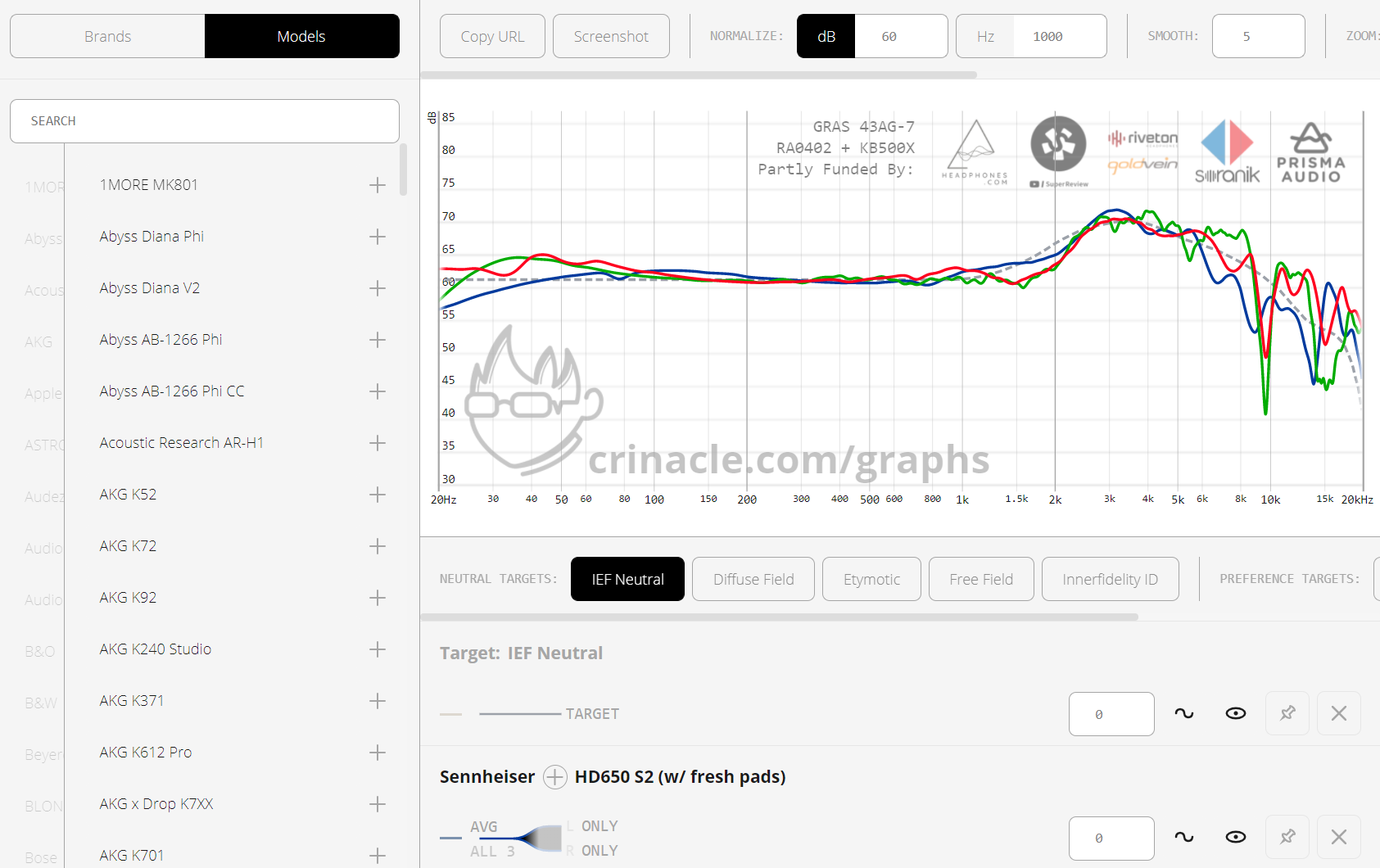
In-Ear Fidelity – Headphone Graph Comparison Tool
Easily compare industry-standard frequency response measurements of hundreds and hundreds of headphones.
Phoney
Senior Member
- Joined
- Nov 1, 2021
- Messages
- 370
- Likes
- 236
You sure that's v2 and not v1?
In-Ear Fidelity – Headphone Graph Comparison Tool
Easily compare industry-standard frequency response measurements of hundreds and hundreds of headphones.crinacle.com
Wow, I missed the boat on responding. I did get a used Gustard H20 and upgraded the stock opamps to Sparkos Labs ss-3602's, while also experimenting with Burson V6 Vivids (OEM opamps were LME-49720's). Class A with at least 2W with balanced ins would do them both well, IMO.How much power and/or what model do you have in mind?
Similar threads
- Replies
- 135
- Views
- 23K
- Replies
- 107
- Views
- 30K
- Replies
- 46
- Views
- 7K
- Replies
- 1K
- Views
- 156K
- Replies
- 64
- Views
- 13K
